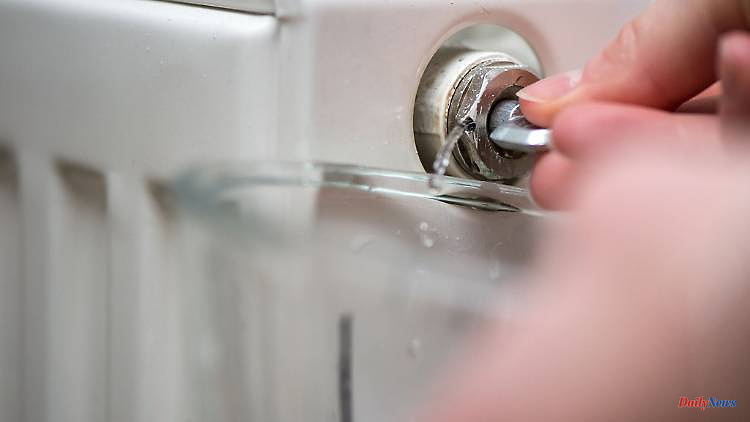Heating costs can be saved with the simplest of measures: For example, by bleeding the radiators when you turn them on for the first time. This is how it works without loss of pressure in the system.
If there is air in the heating system, you will notice it. It does not get really warm, there may even be gurgling in the pipes. This increases heating costs. You should therefore bleed your heating system at the beginning of the heating period.
For most systems it works like this:
1. If possible, switch off the heating circulation pump before venting. That's the advice of the DIY Academy. You should also check the heating system or the thermal bath to see whether the water pressure in the system is high enough.
2. You turn the thermostatic valve on the radiator all the way up and let it get warm. If the radiators are distributed over several floors, the consumer advice center recommends venting the bottom radiators first and then the top ones.
3. Now open the valve on the side of the radiator a little with a square wrench and leave it open until the air has escaped and only water comes out. However, do not unscrew the valve completely. Catch the water in a bowl.
4. Close the valve tightly again, turn down the thermostat. Switch the circulation pump on again.
5. If a lot of water came out before you could quickly close the valve again, the heating water in the system must be refilled. Otherwise the operating pressure is not sufficient to supply all radiators with hot water. A drop in pressure can be seen on the manometer on the system in the basement, usually with a red or green display.
In the operating instructions you will find information about where exactly the water is topped up, whether it has to be tap water or something else and how much bar pressure is required.
The DIY Academy advises checking the water pressure in the heating system before venting for the first time and, if necessary, topping up the water immediately before venting.
6. After priming and then adding water, it may be necessary to bleed again because air has entered the system.
Tip for renters:
Tenants may not have access to the heating system in the basement and need to involve their management and caretakers. But you can see quite well whether you should vent:
There is air in the pipes if the radiator does not get really warm, especially in the upper area, despite the thermostatic valve being turned on fully. Or you can hear the water gurgling in it.












